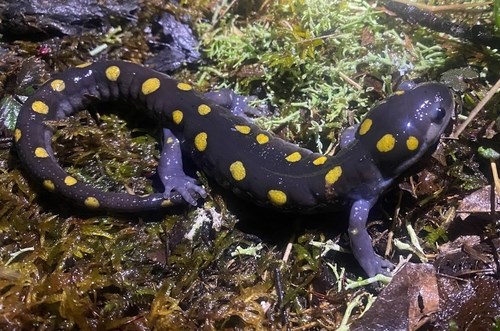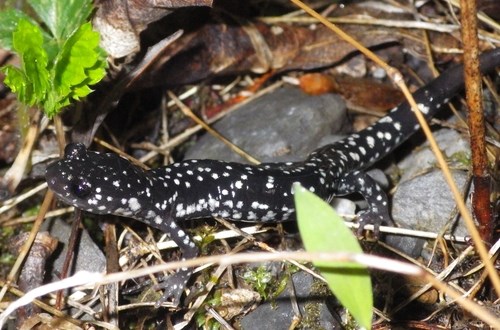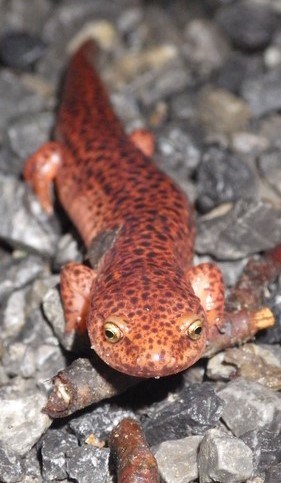
National Park Service 
National Park Service 
National Park Service The coloration of salamanders varies widely. The Northern Red Salamander, like the name suggests, is a bright coral red or orange color. Meanwhile, the Jefferson Salamander is more subdued with a grayish-black body color. The Spotted Salamander has a dark black to gray body color with two rows of bright yellow spots from the head to the tip of the tail. Different salamander species have different life cycles and reproductive habits. Salamanders may take advantage of many different habitats throughout their life, from the forest floor to rock crevices to different water bodies. When they first arose, most salamanders would lay eggs in water that hatch into aquatic larvae and eventually metamorphosize into terrestrial adults. Some salamanders have evolved to lay eggs on land, while others retain the eggs and give birth to fully formed young. Salamanders need to stay cool and moist most of the time to survive. They might spend most of their lives on land under logs or rocks or in burrows dug in damp soil. Otherwise, they might be found in or near small creeks, ponds, and wetlands. Salamanders are carnivorous and may eat insects, spiders, and worms. Larger salamanders may also eat fish or crayfish. Salamanders are currently threatened by climate change, habitat destruction, chemical pollutants, and epidemic disease. If you come across a salamander in the wild, it’s best to avoid handling it and enjoy salamanders by observation only. The salts and oils on human hands may harm salamander’s sensitive and absorbent skin. Salamanders found in the Upper Delaware Region include:
Allegheny Mountain Dusky Salamander (Desmognathus ochrophaeus) Eastern Red-backed Salamander (Plethodon cinereus) Four-toed Salamander (Hemidactylium scutatum) Jefferson Salamander (Ambystoma jeffersonianum) Northern Dusky Salamander (Desmognathus fuscus fuscus) Northern Red Salamander (Pseudotriton ruber ruber) Northern Slimy Salamander (Plethodon glutinosus) Northern Spring Salamander (Gyrinophilus porphyriticus porphyriticus) Northern Two-lined Salamander (Eurycea bislineata) |
Last updated: February 25, 2022
